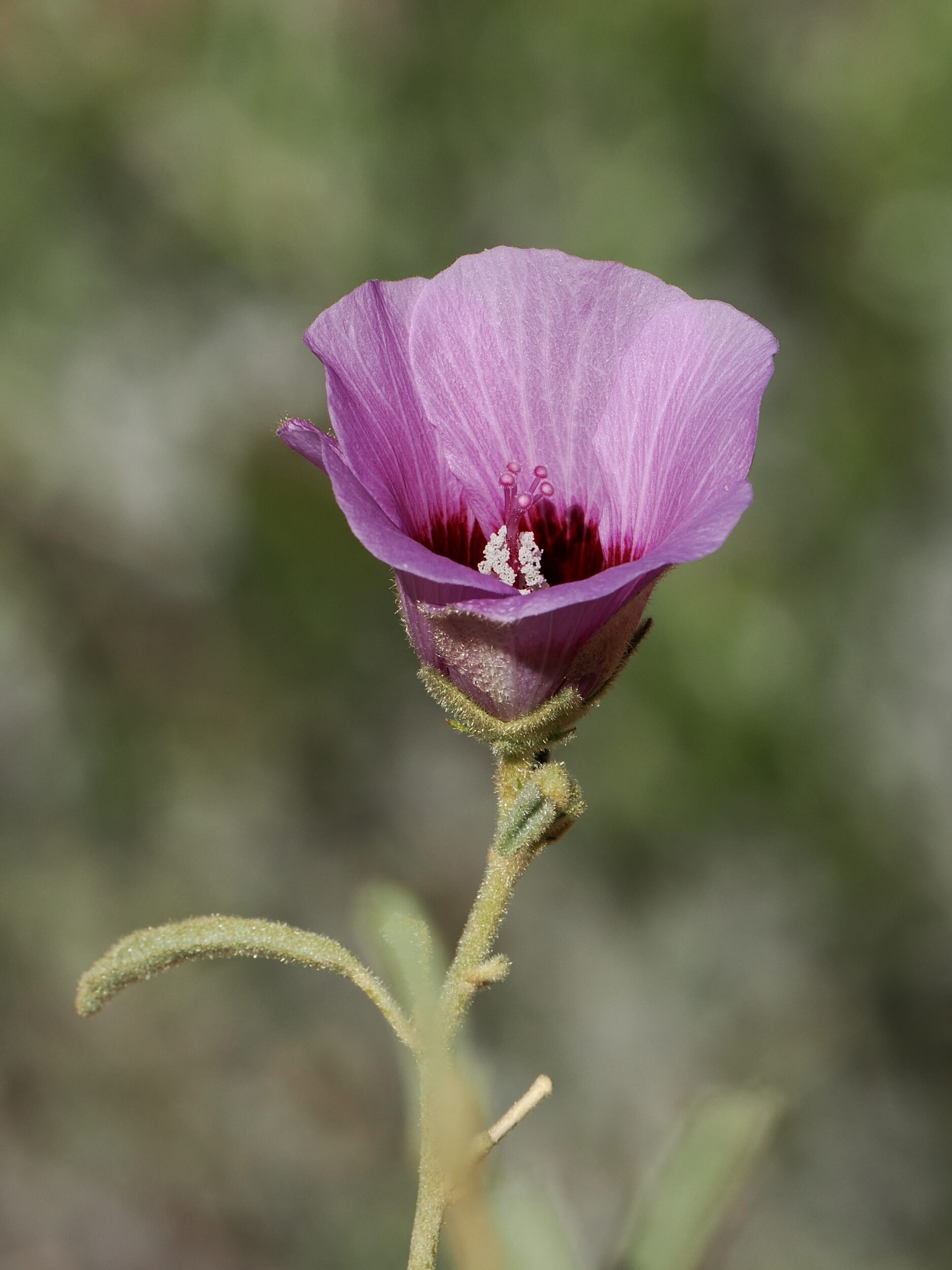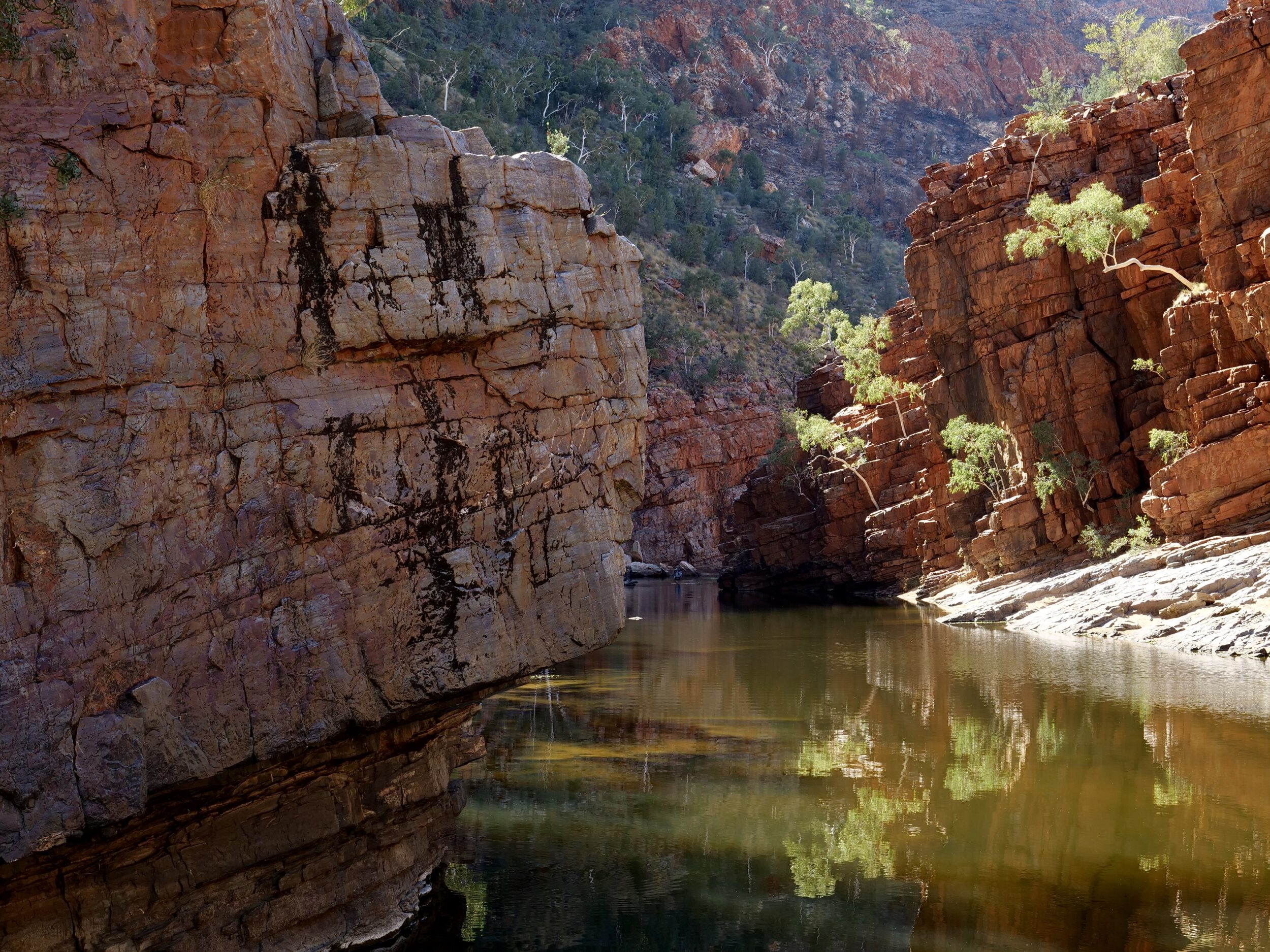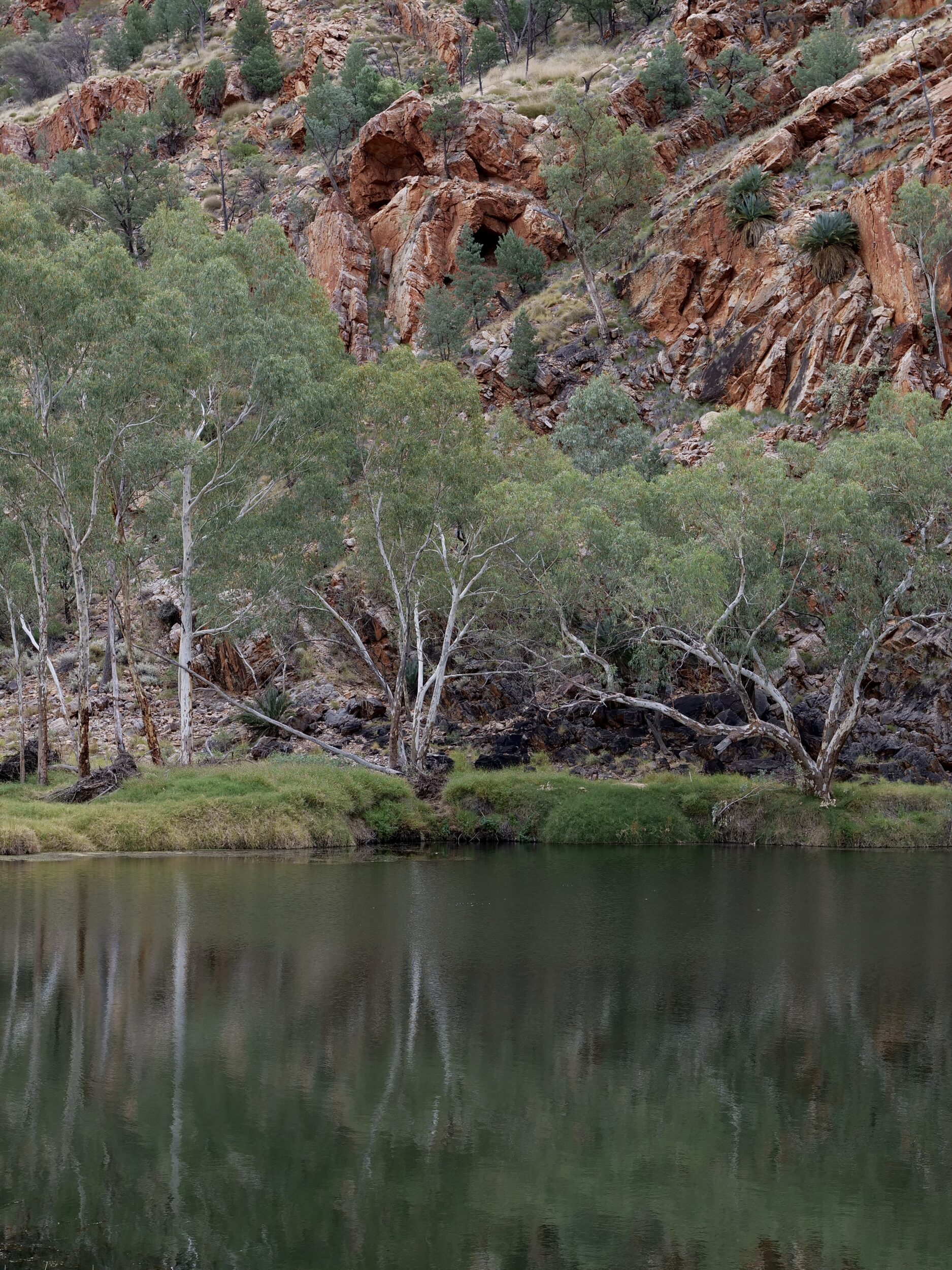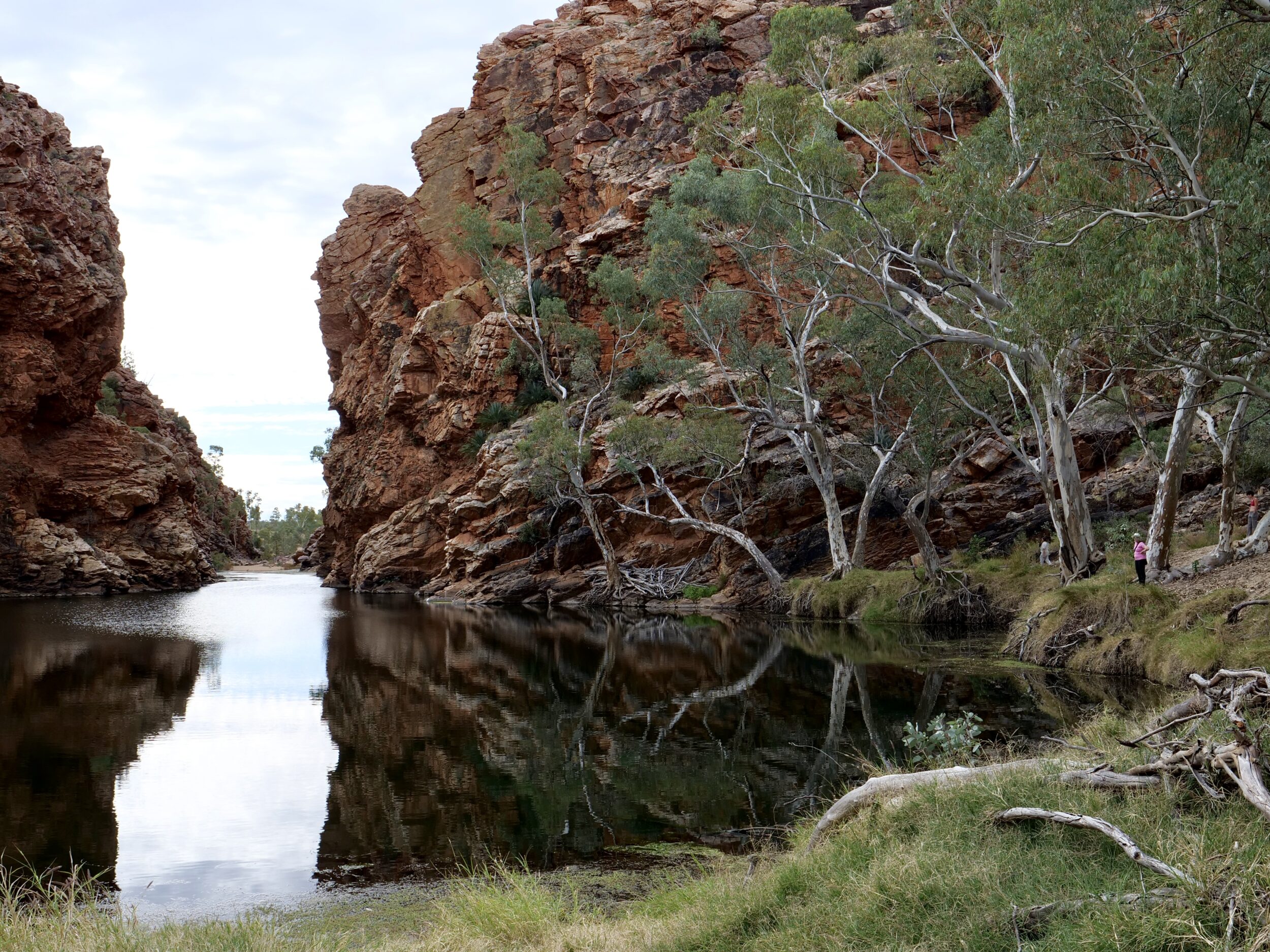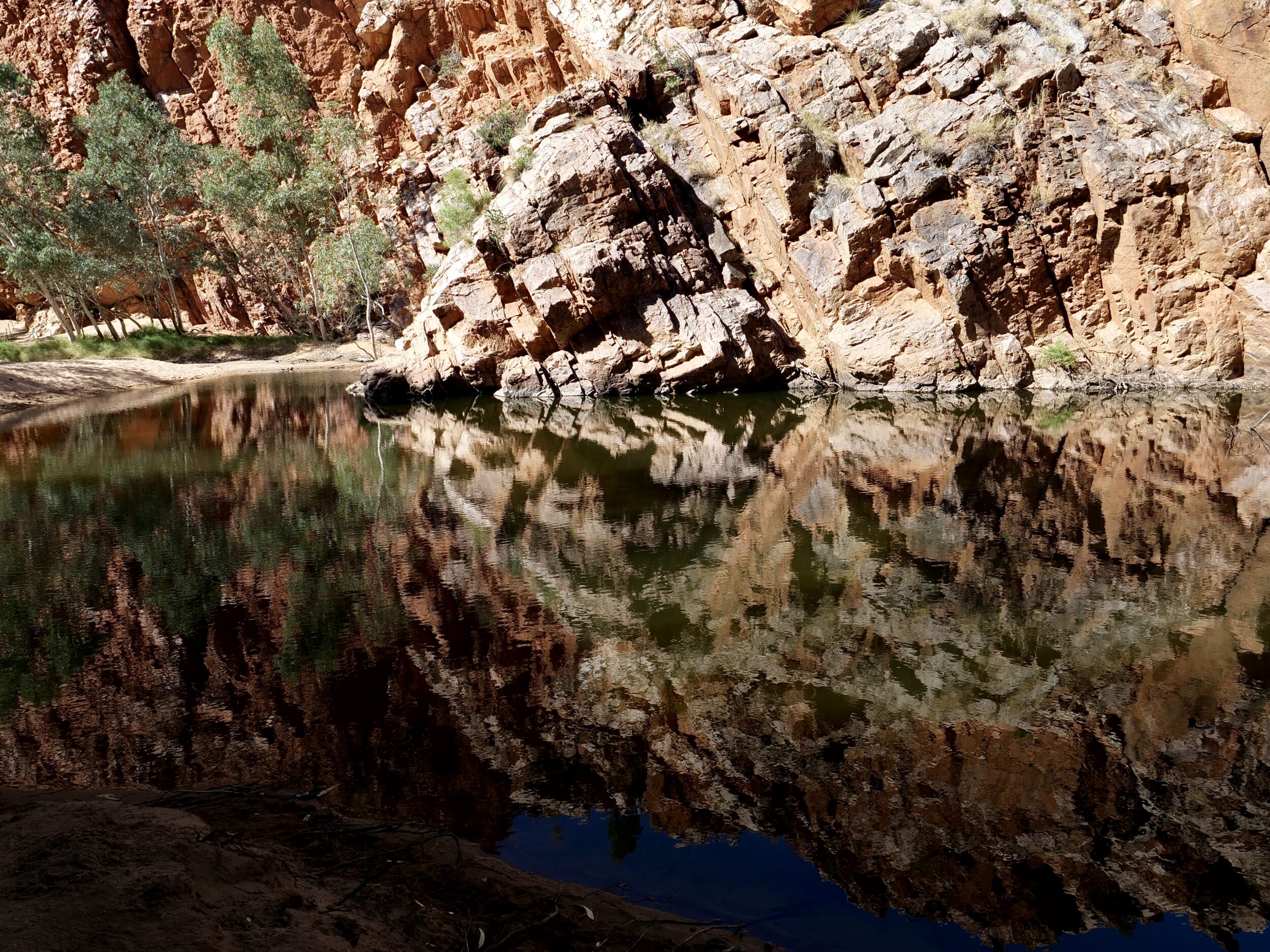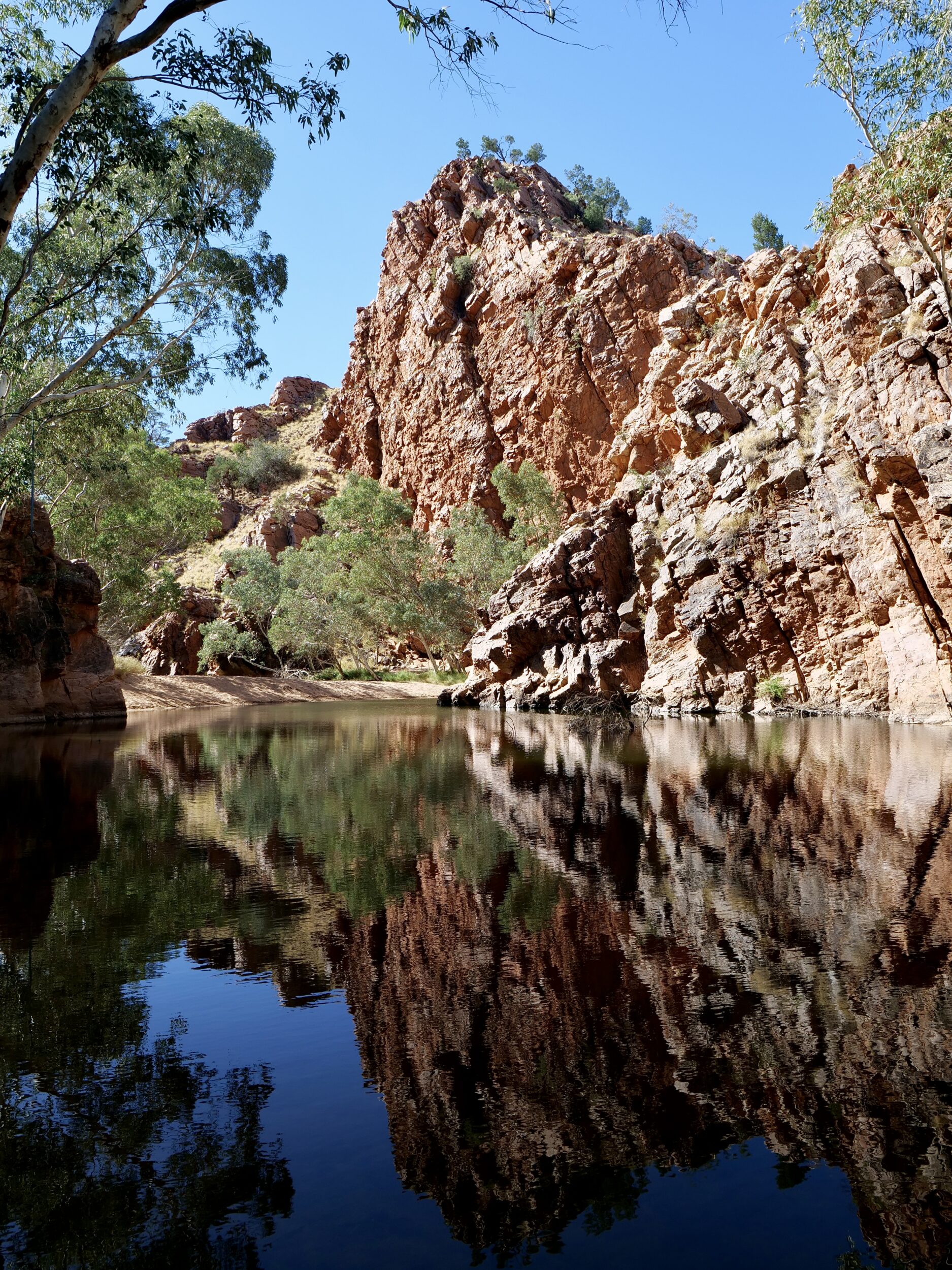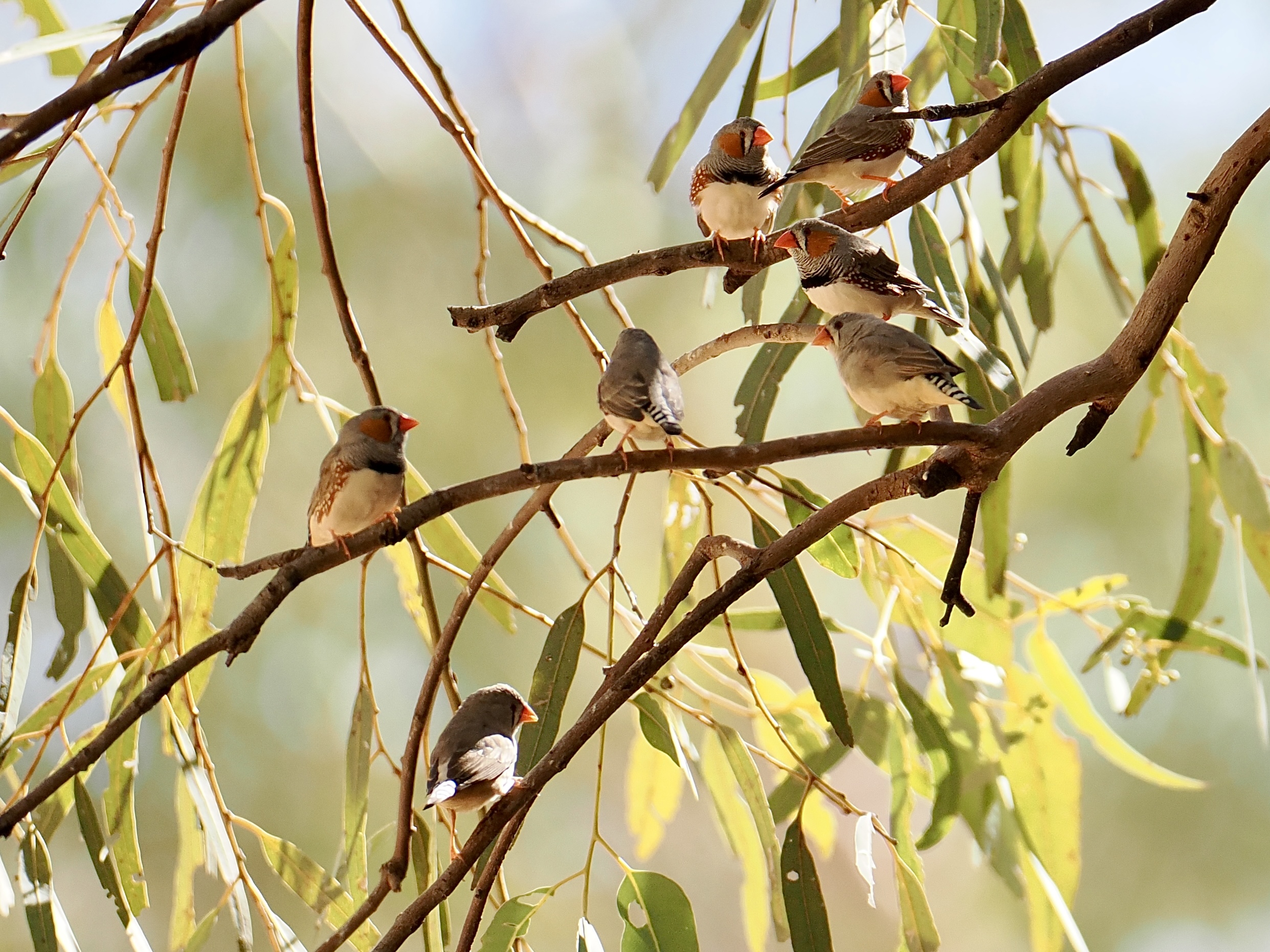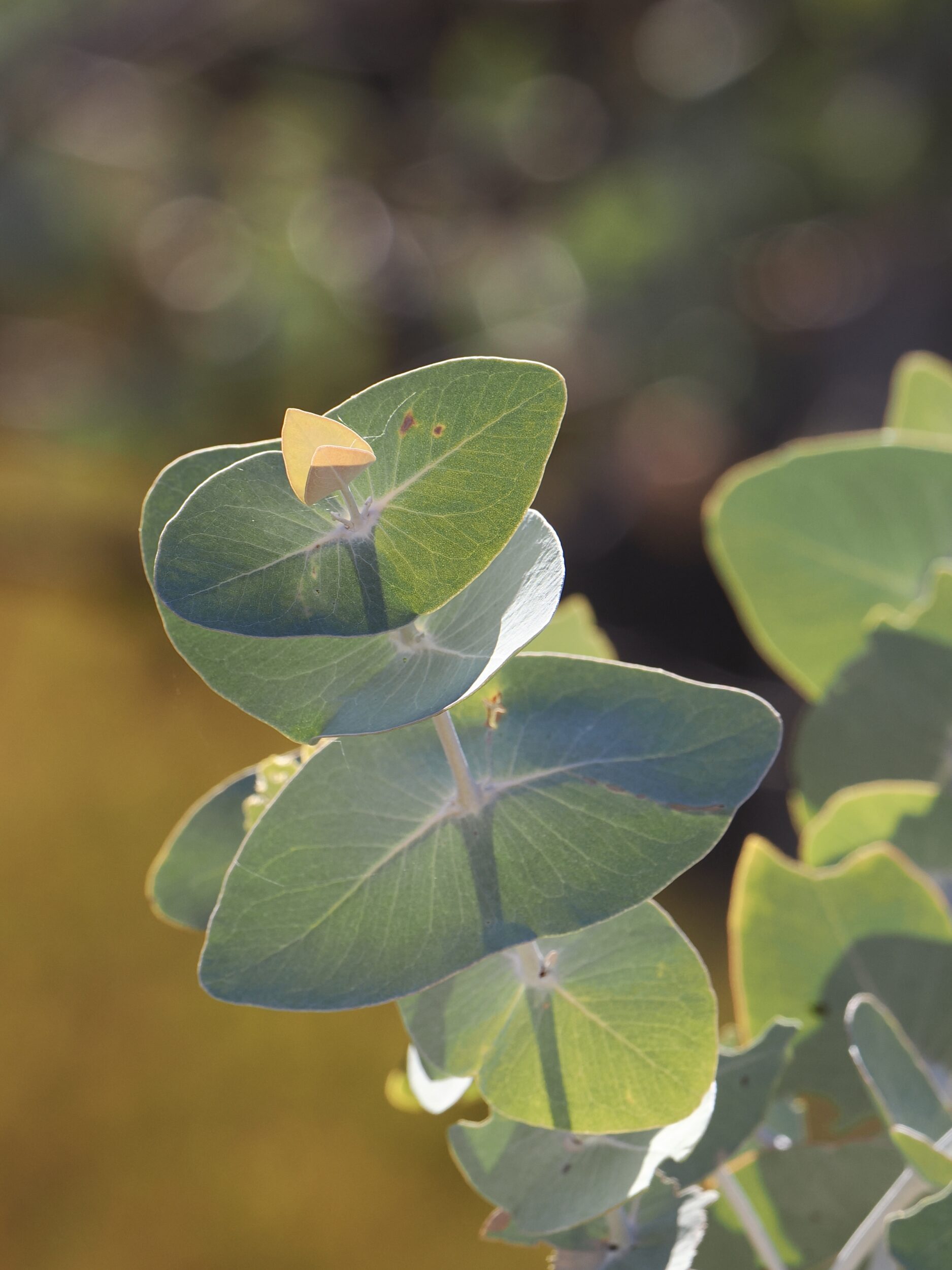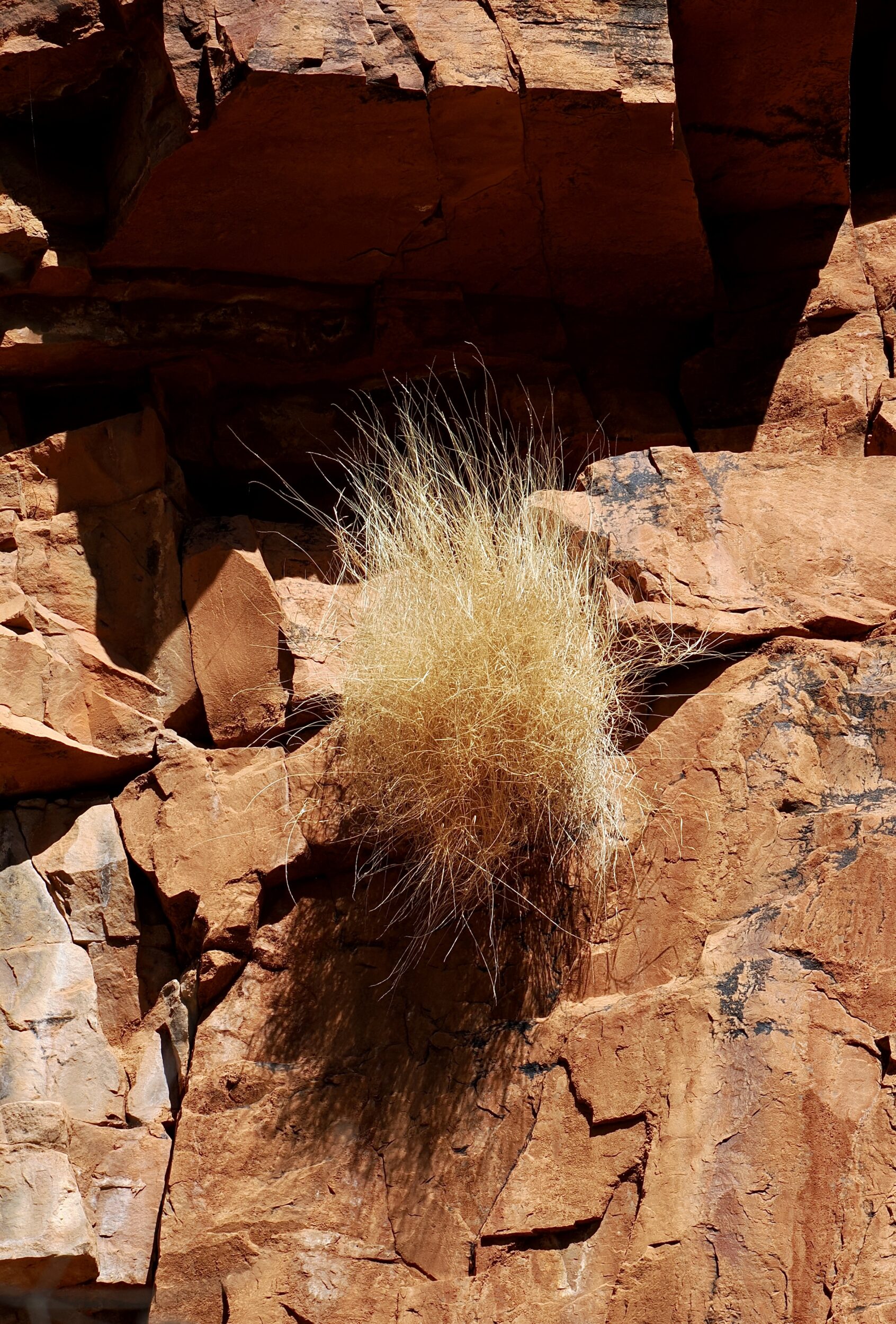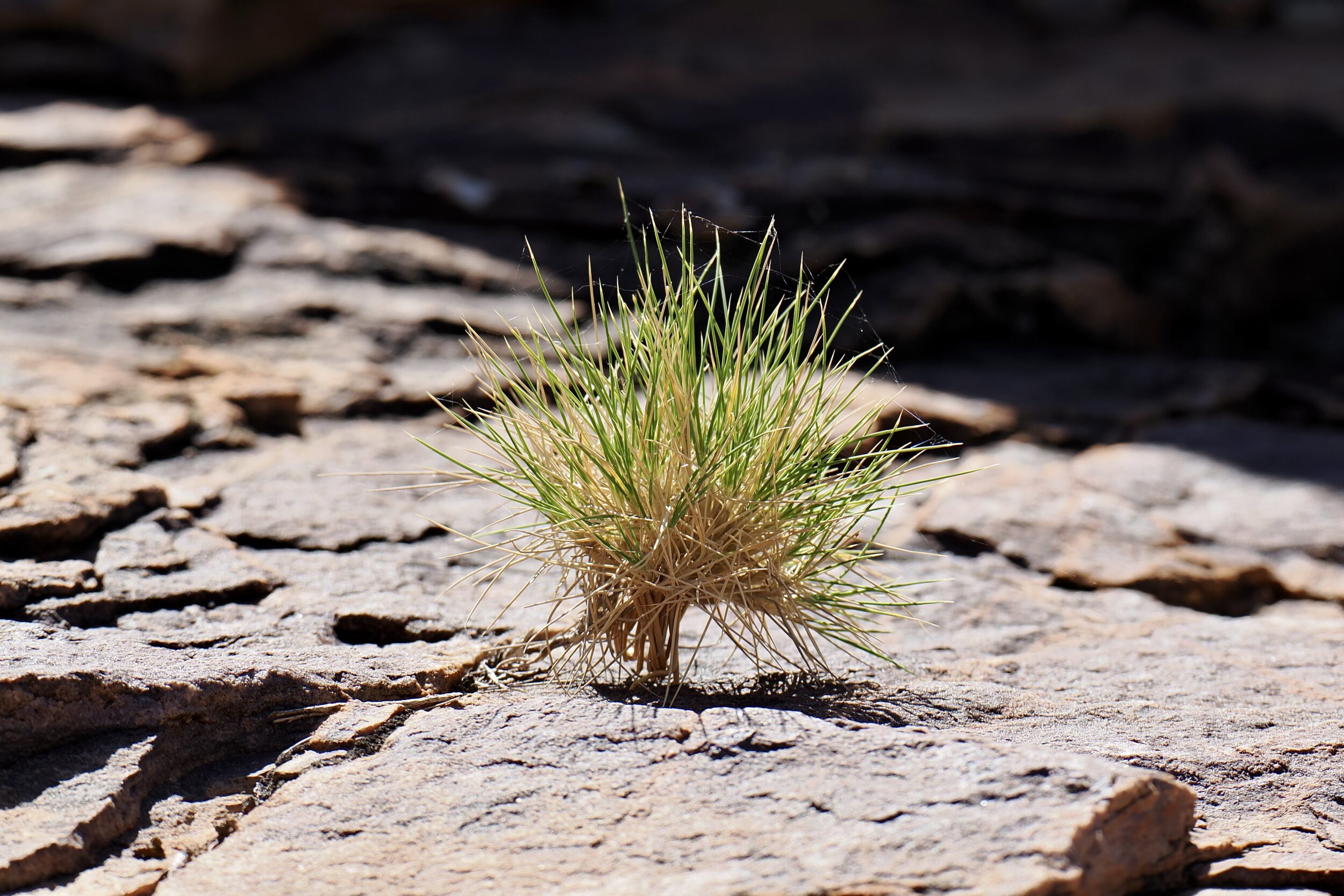After taking the photo featured in #14 in this series, my beloved and I decided to scramble our way up to the path that followed a ridge line, rather than retrace our steps along the gorge’s floor
This proved surprisingly easy.
Less than ten minutes later we were heading back to Ormiston HQ, via a well-made pathway that gave us easy access to the lookout from which I took the image featured in this series’ first chapter.
Comments closed